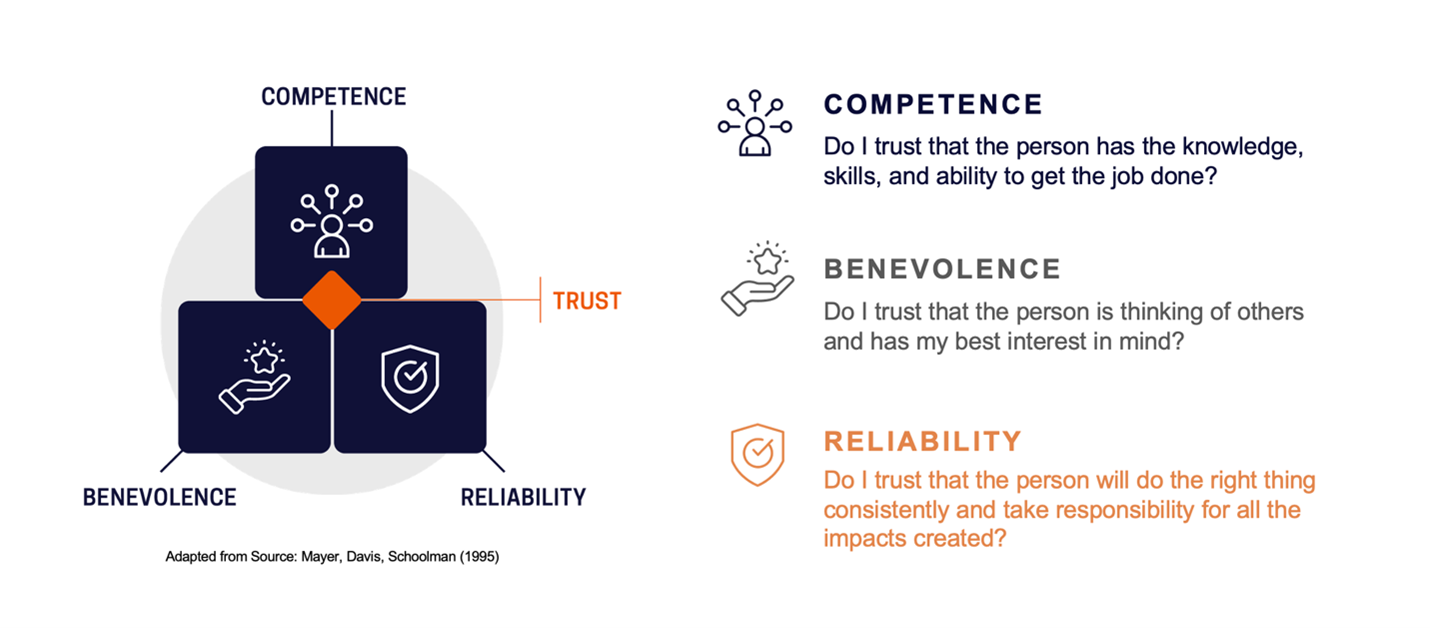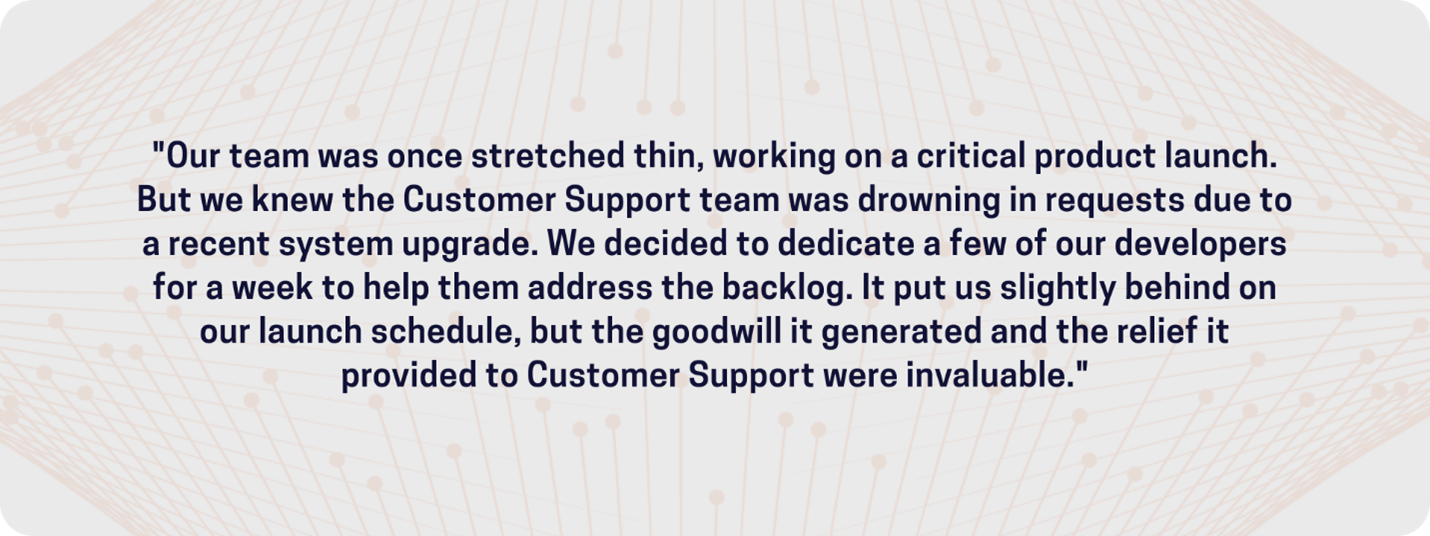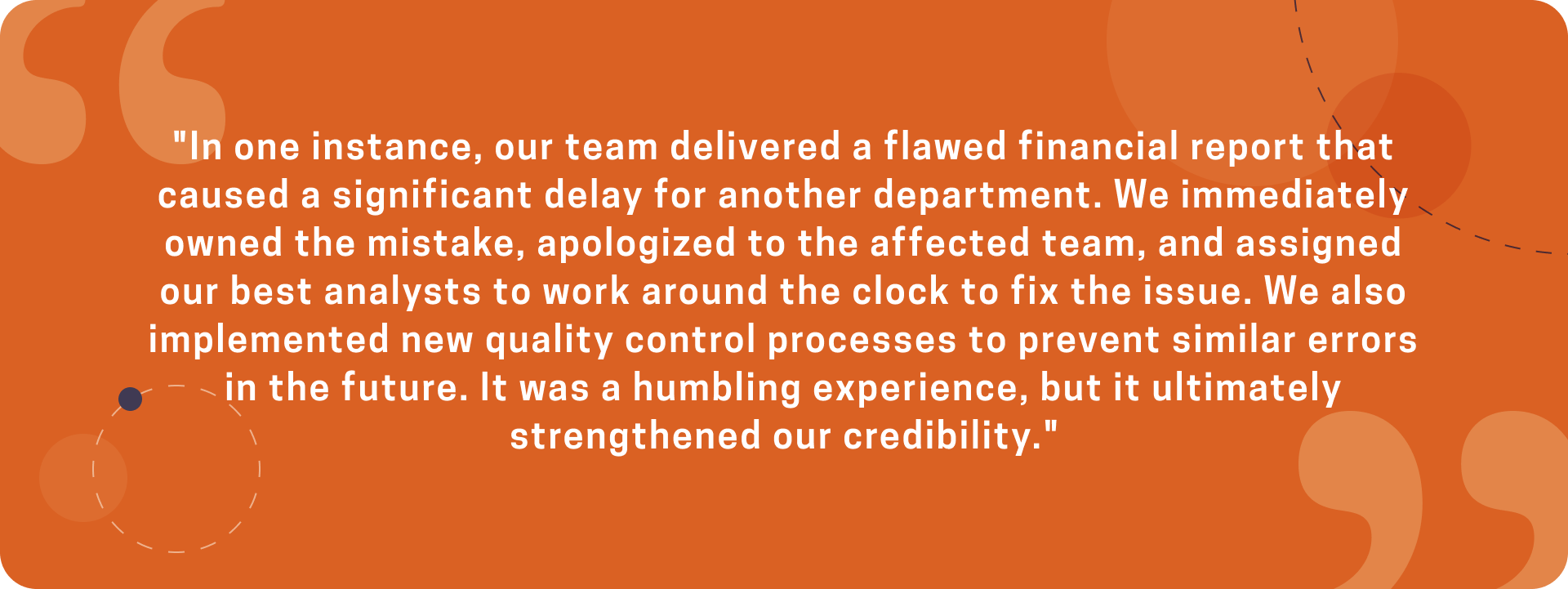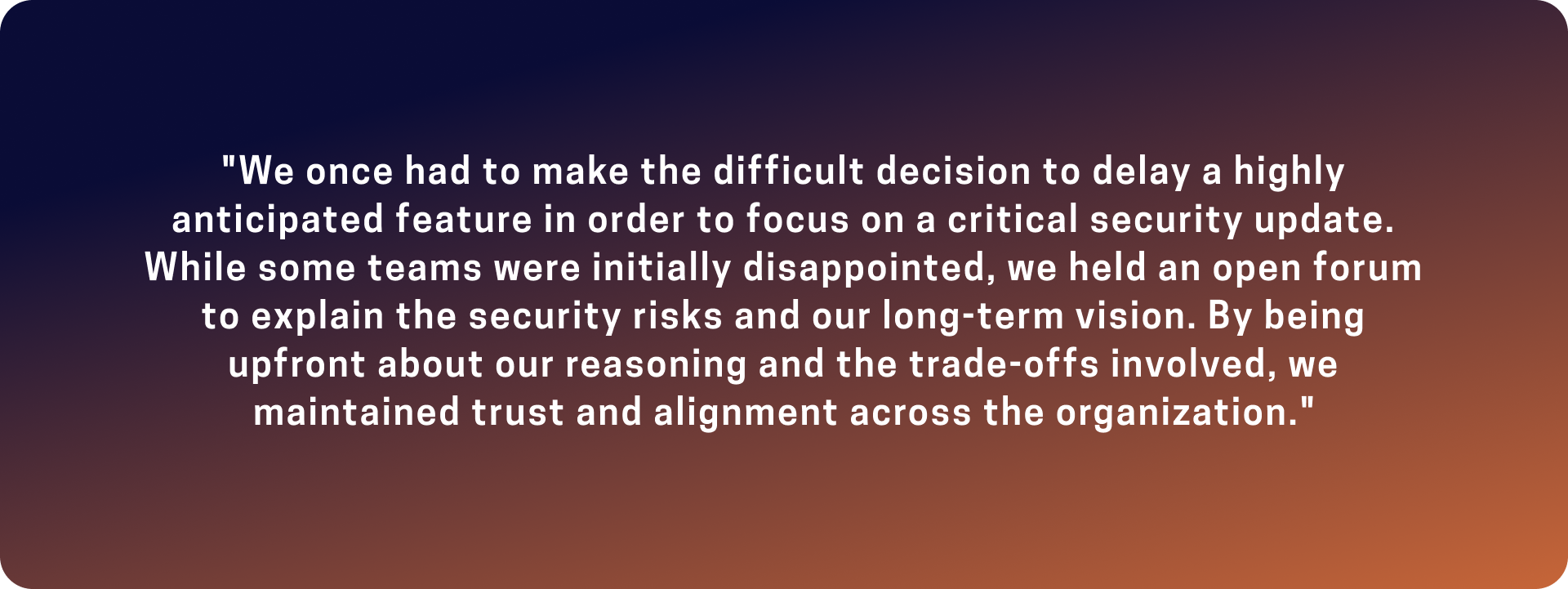Strategies to Build Team Trust
We live in an age of mistrust – political division, disinformation, increasing levels of isolation, loss of faith in institutions, secretive data collection, cybersecurity failures, questionable business practices – the list goes on and on. And yet, we know that trust is foundational to organizational success. Trust is the glue that holds a team together through challenging times. Trust is the social currency that enables information and resources to be shared. Trust is the accelerator that allows teams to take rapid, decisive action. Trust is the protective shield that allows teams to transparently admit mistakes and learn from them. Trust is the engine that drives creative problem solving. Trust is the competitive advantage that improves talent attraction, retention, and deployment.
Trust is also the bedrock for a Team of Teams. But how can trust be built between teams when facing such strong cultural and environmental headwinds?
A groundbreaking study conducted by Mayer, Davis, and Schoorman in 1995 led to the preeminent model of organizational trust used across industries. The research revealed that trust is a composite concept made up of three independent factors – benevolence, competence, and integrity (or reliability). These factors must all be present for functional trust to exist. These three factors are just as relevant when assessing trust between individuals or between teams. Team leaders must proactively and regularly cultivate all three factors to counteract the climate of mistrust and forge a strong foundation on which to build a Team of Teams.

BENEVOLENCE
What does a lack of benevolence look like at the team level?
Sometimes, simple misunderstandings, fairness perceptions, or intra-team competition can erode personal, team, and organizational benevolence. In one example we see frequently, Team A is a high-performing team that always achieves its objectives. It is composed of wonderful people who are thoughtful and kind, but as a collective, there is a sense that they will put their team’s goals ahead of all else. Team B deeply admires and appreciates how hard Team A works but does not believe that Team A will share resources or information if it means that their goals may be adversely impacted. Seeing Team A’s success and public recognition, Team B has begun to subconsciously adopt Team A’s competitive mindset. Both teams are striving to do great work and have good intentions, but there is no real trust between Team A and Team B. In a competitive environment, the two teams stop sharing information, resources, and common purpose, and they may even actively or unknowingly undermine organizational objectives in the process.
How to develop a greater sense of benevolence-based trust between teams.
There is no quicker way to establish benevolence-based trust than for a team to proactively meet the needs of another. Unfortunately, McChrystal Group has found that across 75,000 responses that span industries and organizational levels, only 26% of employees agree “other teams articulate how their actions impact my team.” Whether it is sharing information, resources, or funding; when a team hears about a challenge and then goes out of their way to offer support before being asked and without any ulterior motive, there is an immediate connection of trust formed.
Leaders can accelerate this process by identifying the biggest barriers and challenges other teams are facing and offer to help in specific, concrete ways. Do not offer something that you cannot deliver and be sure not to imply some sort of quid pro quo. If you can avoid these pitfalls and provide real value that unlocks another team’s performance, you will rapidly establish a reputation of benevolence for your team.

Reflection questions:
- Do you know what other teams need or what challenges they are facing?
- What resources do you have that could be strategically leveraged elsewhere?
- Do you see other teams as competitors, or do you authentically celebrate their wins?
- What steps do you take to foster goodwill with external stakeholders?
- How do you ensure team members, regardless of rank or role, feel valued and heard?
COMPETENCE
What does a lack of competence look like at the team level?
Even minor mistakes can erode faith in a team’s competence to deliver, but how a team responds to errors is vital to building experience and improving delivery. In an example from one partner, Team C is responsible for financial tracking and works incredibly hard to meet other’s requests and deadlines. Unfortunately, there have been a few recent miscues when it came to invoicing two key clients for Team D. There have also been quiet discussions that Team C made some accounting errors on the previous year’s state taxes that have negatively impacted the bottom line. Team D has to scrutinize every invoice and financial statement to make sure there are no mistakes. Even the smallest formatting issue or non-material error sends up alarm bells for Team D who now spends dozens of hours every month double-checking Team C’s work. Team D really appreciates the willingness of Team C to support their requests, but it does not trust Team C to deliver quality work.

How can you develop a greater sense of competence-based trust between teams?
The first and most obvious step is that a team must excel at their core functions. If those key responsibilities are not executed with excellence, then the team must take immediate and concrete steps to close that capability gap. The leader must openly acknowledge the issue and lay out a comprehensive plan with timelines and accountability to shore up the work.
If those core functions are being executed competently, but there is still a sense of mistrust, the team must begin reshaping the narrative. It does little good to laud your capabilities, but the team can provide “evidence” through stories. Find proponents who have benefited from your team's support. Then, orchestrate opportunities for these proponents to share how your team supported their objectives. These stories must be genuine, and they must fit within the larger context of a meeting or forum so that they don’t feel contrived. Still, when they are told from a place of authentic gratitude, the reputation of your team’s competence and the value they provide will be cemented quickly.
Reflection questions:
- What core functions must your team excel at to establish trust in your competence?
- Who are the network influencers who will vouch for your team’s capabilities?
- What is the best forum to spread the word of how your team can help others?
- How do you instill confidence in your team about your ability to lead effectively?
RELIABILITY
What does lack of reliability look like at the team level?
Predictable behaviors and outcomes are key to reliability. In one instance, Team E is composed of subject matter experts whose unique skills are critical to servicing clients. While their expertise is deeply respected, Team F is uncomfortable working with them because their behavior seems erratic. On a tactical level, the work that they produce is always excellent and they rarely miss a deadline, but their lack of responsiveness throughout a project and unclear priorities creates significant anxiety for Team F. On a strategic level, Team E’s overarching goals are opaque at best. They will invest in seemingly random pieces of technology and external vendors to meet urgent needs, but there is no clear plan for scaling their essential capability. Team F is confident in the capabilities and intentions of Team E, but it doesn’t trust Team E to make optimal decisions.

How to develop a greater sense of reliability-based trust between teams.
Reliability is fundamentally about predictability. Can others predict how your team will spend their time and use their resources? Other teams may not agree with your team’s priorities, but if they can understand the logic that underpins those choices and can accurately predict how your team will respond in a given situation, then they can still trust your team. The key is to proactively share your team’s priorities, goals, and interdependencies. When those critical factors are understood by other teams, they are equipped to make decisions with a strong degree of confidence. As conditions change and progress against your goals or resource availability shifts, make the effort to let your stakeholders know quickly and with full transparency. Providing regular (and transparent) updates for situational awareness will lower other team’s anxiety and establish a firm foundation of trust.
Reflection questions:
- Would your team be able to clearly state your priorities? Would your stakeholders?
- When was the last time you explained “why” you are prioritizing certain initiatives?
- Do your actions consistently reflect the values you expect of your team?
- How transparent are you with your team and stakeholders about challenges and decisions?
- Is there a consistent forum or mechanism to update others when your priorities change?
Navigating today's environment of mistrust requires a proactive and intentional approach to building trust. It's a valuable investment that yields significant returns in productivity, innovation, and employee engagement. We've witnessed the transformative power of trust in countless organizations, helping teams move from silos and suspicion to collaboration and shared success. The journey begins with a clear understanding of your team's current state and a commitment to fostering benevolence, competence, and reliability. Are you ready to transform your team dynamics and unlock their full potential? Explore our trust-building framework and case studies to see how we can help you achieve lasting change.



